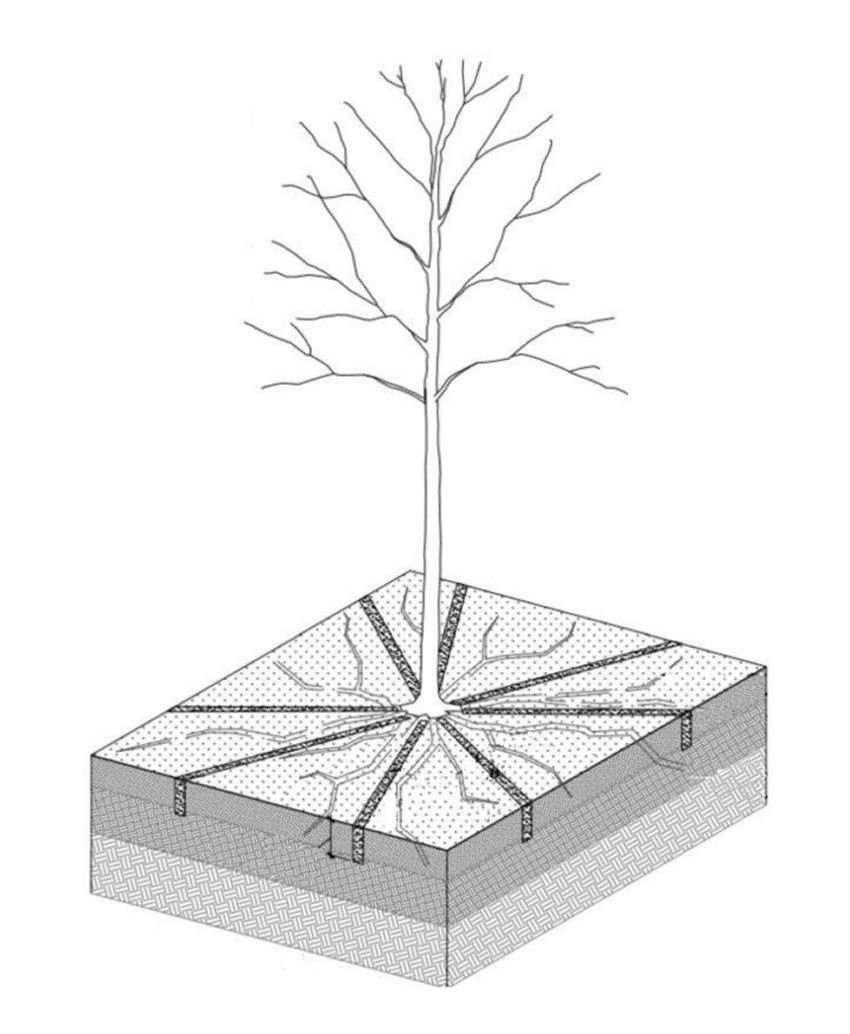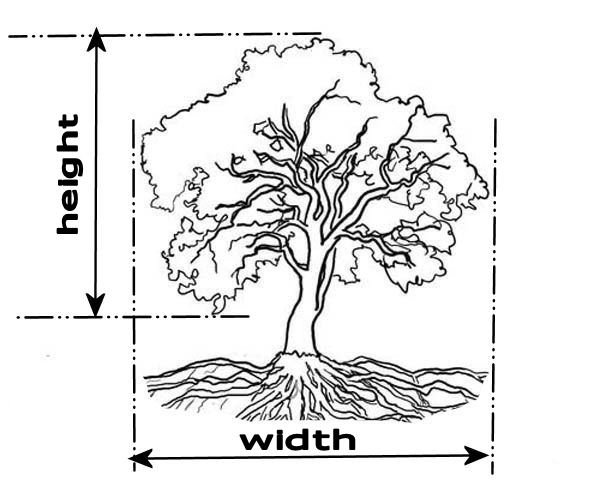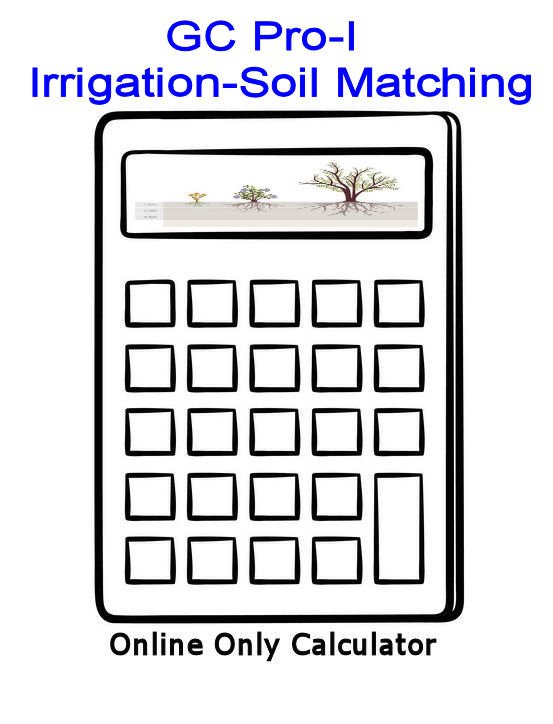
|
Bad Soil Remediation |
Garden Tip TB1483 |
Technical Bulletin Series
|
|
When trees or large shrubs begin to show signs of stress indicating
their root growth is being restricted, there are two techniques to
consider for remediating this: Radial Trenching and Vertical Mulching!
|

|
|
Radial trenching should only be done by a certified Arborist,
as it can easily cause the tree to become unstable or die if not done properly.
The trenches seen in this sketch are dug with an air-blade and laid down in between primary roots. After the trenches are created they are filled with amended soil. The trenches can extend beyond the area where the root system currently is bound thereby providing good soil composition for the roots to grow into. |

|
|
Once the trenches are created, they would look similar to this (perhaps wider) before they have been filled with amended soil. |

|

|
|
In the case of Vertical Mulching; holes are drilled either by an air spade or an auger in a pattern around the shrub or tree and then filled with amended soil. These holes will need to be relatively close to the existing roots in order that they will discover this nice new soil to grow into.
|
|
Perhaps you can schedule extended irrigation run times?
Where possible, if you can extend the "run-time" of your irrigation
cycle towards longer periods like 2 to 4 hours, this;
long slow water cycle will have a chance to soften up the soil enough
to allow root development to proceed.
Obviously if there are many different zones on a system - and knowing the run times must not overlap - this LONG RUN TIME may be impossible to schedule. Another limiting factor would be where shallow rooted plants like turf are on the same zone. Turf can't be set to run for 2 to 4 hours. Where long run times are not possible, and hard soil makes expanding root systems like this impractical, these techniques of Radial Trenching and Vertical Mulching can help. |
|
It is possible to avoid this problem in the first place!
Good planning initially can make these practices, for the most part, unnecessary. Know what size the tree or shrub you plant will become in 10 years or so, and dig the initial hole large enough to provide a good soil environment for root large enough to accommodate that. |

|
|
The Concept of Canopy and Root System |
|
Being successful when installing new plants into your landscape actually
involves several important considerations. Even if you have really good
soil that doesn't drain too fast and yet doesn't drain too slowly, extra
organic matter (that comes from compost or planting mix) provides the food
for soil bacteria to establish and grow. Living soil is one of the "keys" to success in the garden.
|

|
|
Remediating or correcting bad soil for an existing plant is the first chapter of the project for helping the plant to improve. Proper irrigation is the necessary follow up to this step. The Garden Calculator Pro-I (a free online tool) provides complete and accurate irrigation lay-out and scheduling for the landscape area under improvement. Including everything from identifying the soil composition to emitter-count and run times, this on-line calculator that goes with you right to the job / plant site will ask a few simple questions and provide many specific answers and recommendations. No guesswork involved and a complex analysis is conducted instantly. |
|
Additional information found on these following pages! |
|
Understanding the critical importance of soil composition is essential to being successful at providing better root growth conditions for the plants in your landscape. Visit TB1482 "Understanding Soil Composition" for some good basic information on the all-important category of successful gardening. |
|
Being successful when installing new plants into your landscape actually involves several important considerations. In this Garden Tip the concept is Understanding How Vital Good Soil Composition is. Even if you have really good soil that doesn't drain too fast and yet doesn't drain slowly, extra organic matter (that comes from compost or planting mix) provides the food for soil bacteria to establish and grow. Living soil is one of the "keys" to success in the garden. To better understand how to AMEND the soil for your new plant; visit TB1481 "Critical Aspects for Soil Composition". |